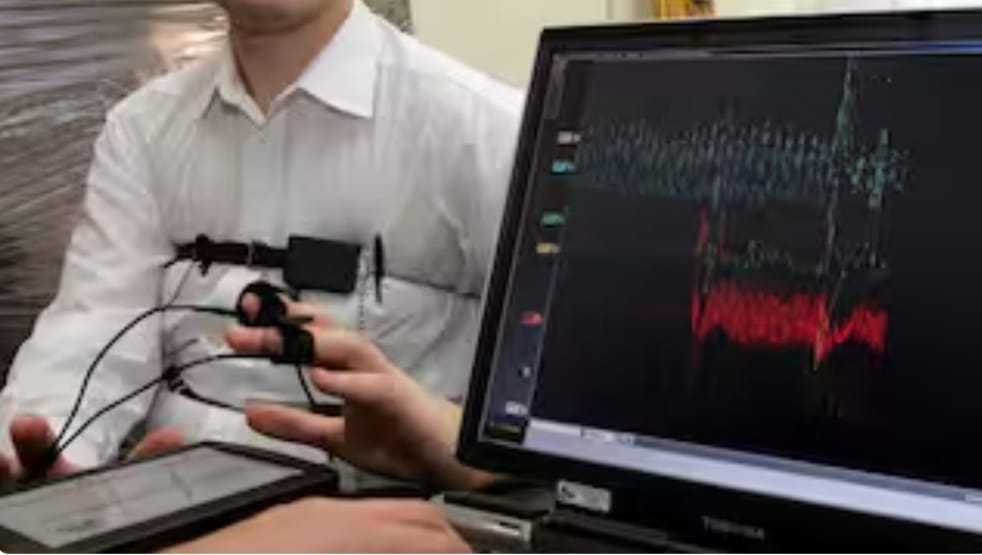
Kolkata doctor Death: RG Kar Ex-Principal Dr Sandip Ghosh Undergoes Polygraph Test — What Is It, How It Works
Polygraphs measure physiological responses like blood pressure and respiration to detect lying, but their accuracy is questionable and results are inadmissible in indian courts unless taken voluntarily.

Dr Sandip Ghosh, the former principal of Kolkata's RG Kar Medical College, underwent a polygraph or a lie detector test on Saturday. Ghosh was subjected to a polygraph test by the Central Bureau of Investigation (CBI) because of alleged discrepancies in his statements given to the probe agency during questioning over the brutal rape and murder of a junior doctor on the RG Kar Hospital's premises on august 9.
A special court in kolkata on thursday also allowed the cbi to conduct lie detector tests on two first-year post-graduate doctors, housekeeping staff, and one hospital intern, who were on duty on august 9, the day of the horrific incident. As per media reports, fingerprints of two doctors were found in the seminar room where the trainee doctor was allegedly raped and murdered. As per the probe agency, CCTV footage showed the housekeeping staff moving from the first floor to the third floor at the time of the incident, while the intern was spotted chatting with the victim sometime before the crime was committed.
Though cbi reportedly believes these people were not directly involved in the incident, it is to be determined whether they tampered with evidence or were part of any conspiracy.
What Is a Polygraph or lie Detector Test
A polygraph is an instrument that examines an individual’s physiological responses that are triggered when they are lying. These responses, based on several physiological indicators, such as blood pressure, pulse, respiration, and skin conductivity, are normally different from what they would be when they are telling the truth.
During the test, the person is asked a series of questions while instruments like cardio-cuffs or sensitive electrodes are attached to their body to monitor variables such as blood pressure, change in sweat gland activity, pulse, respiration, and blood flow among others.
When the polygraph test starts, the questioner asks three or four simple questions to establish the norms for the person's signals. Later, while the real questing starts, all of the person's signals are recorded on the moving paper. The person's every response is assigned a numerical value to conclude whether they are telling the truth, are deceiving, or are uncertain.
Polygraph Tests: Purpose and Accuracy
The purpose of a lie detector test is usually to prove whether or not a person committed a crime. However, the test cannot test for the honesty of a person, as polygraphs are employed on the assumption that most individuals do not lie or mislead until they are anxious or frightened.
Instead, the accuracy of the test relies on the polygraph operator’s analysis of the tested person’s responses, which can be inaccurate. According to the National Research Council, evidence suggests that lie detector results can also be fabricated.
Are Polygraph Test Results Admissible in Court
The polygraph test results are prohibited as admissible evidence under the indian Evidence Act of 1871. In the 1997 case of DK Basu v. State of West Bengal, the supreme court noted that the forcible administration of polygraph or the narcotics test violated Article 21 of the Constitution, which guarantees the right to life and liberty. The test can also be constituted against the Right to Privacy, which is a part of the Right to Life.
In the 2010 ‘Selvi & Ors vs State of karnataka & Anr’ case, the apex court noted that the result of a lie detector test cannot be treated as a confession. However, it added that if taken voluntarily, results can be submitted as evidence. However, the top court asserted that those who volunteer for the test must have access to a lawyer, and have the physical, emotional, and legal implications of the test explained to them by police and the lawyer. It said that the ‘Guidelines for the Administration of Polygraph Test on an Accused’ published by the National Human Rights Commission in 2000, must be strictly followed.
How Polygraph Test Will Help In the kolkata Case
The test can help in assessing inaccuracies in the statements of the accused and their alibis. By monitoring their physiological behavior about specific questions, investigators can determine if there are discrepancies in their story.




 click and follow Indiaherald WhatsApp channel
click and follow Indiaherald WhatsApp channel